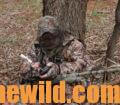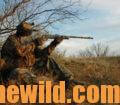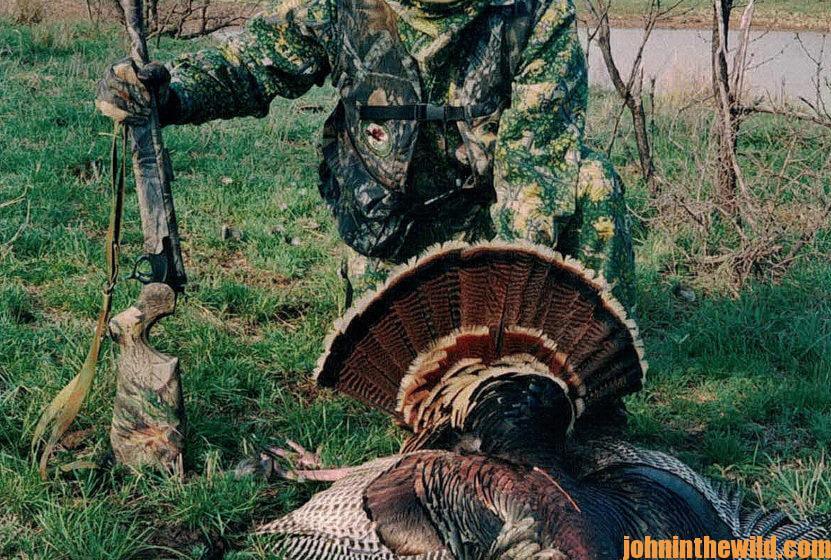Editor’s Note: Some states still have open turkey seasons. Although my home state of Alabama’s season has ended, I know you still can learn plenty of turkey savvy from my longtime friend, 81-year-old J. Wayne Fears of north Alabama, who can’t remember a time when he hasn’t hunted wild turkeys. He started guiding for turkeys in 1975 full-time until about 1985 and then has hunted them part-time ever since. He’s hunted turkeys all over the U.S. and has battled some of the toughest longbeards in the nation. This week we’re learning from him about what gobblers have taught him through the years.
I was hunting Rio Grande turkeys on the Nail Ranch, while a real good friend of mine, Johnny Hudmun, was guiding and doing turkey hunts right beside me 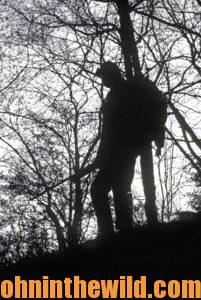 on the Cook Ranch. The night before the opening day of the season, we had dinner together. We’d known each other for a while, and since we would be hunting close to each other, we decided to spend some time with each other.
on the Cook Ranch. The night before the opening day of the season, we had dinner together. We’d known each other for a while, and since we would be hunting close to each other, we decided to spend some time with each other.
We both found a gang of Rio Grande turkeys that were roosting on the edge of a creekbank, which was the boundary between the Cook Ranch and Nail Ranch. He told me that he was going to be guiding a doctor from Florida, and I told him that I would be hunting by myself. We both agreed that there were enough Rio Grande turkeys roosting on the creek bottom for both of us to call. Although we were fairly close to each other, we thought of us could take one.
Early the next morning, I set up on top of a hill above the creek where I knew the turkeys could hear me. I sat against a mesquite tree that faced an opening where I believed the gobblers might come. I was at least 1/2-mile away from the roost tree when I heard Johnny’s truck driving close to the creek. I heard the door squeak on the truck as Johnny and his client got out because the ranch was graveyard still, and there was no wind. A little while later, Johnny started yelping. I heard gobblers all along the creek answering his calls and decided that I needed to let those gobblers know where I was. I yelped fairly softly knowing that the morning was so still, but Johnny yelped louder than me. In the end, it didn’t really seem to matter which one of us called because all of the turkeys gobbled.
When the hens started flying off the roost, I could see them from my vantage point. Shortly after, the big gobblers flew down as well. When Johnny yelped,  the gobblers turned toward him and when I yelped, the gobblers turned toward me. As the sun began to rise, most of the gobblers left the area with the hens and didn’t come to me or Johnny. As I continued to watch the birds fly down, I saw three longbeards fly between Johnny and I. Every time Johnny yelped, I yelped right behind him. The difference between my calling and Johnny’s was that I was constantly using different types of calls while Johnny was only using one.
the gobblers turned toward him and when I yelped, the gobblers turned toward me. As the sun began to rise, most of the gobblers left the area with the hens and didn’t come to me or Johnny. As I continued to watch the birds fly down, I saw three longbeards fly between Johnny and I. Every time Johnny yelped, I yelped right behind him. The difference between my calling and Johnny’s was that I was constantly using different types of calls while Johnny was only using one.
Finally, one gobbler went in the direction that the other gobblers and hens went. Now, there were only two gobblers for Johnny and I to compete for, and I kept changing my calls from a mouth call, to a box call and finally a slate call. so that I could sound like three different hens. As Johnny continued to use one call, the two gobblers turned and started coming in my direction. When the two birds made it to the top of the hill where I was sitting, I picked out the biggest one and took my shot . While I looked at Johnny through my binoculars, I could tell that he became exasperated by the fact that I had killed one of the two turkeys he wanted his client to kill. However, the hunt was fair. Johnny’s chances of getting a gobbler were just as good as mine.
What I Learned from the Captain Cook Turkey:
* You have to think about what you can do to be competitive when vying with another hunter to not only take the gobbler, but convince it to come to you instead of going to the hens or another caller.
* One of the best techniques I know of to use to compete for a gobbler is to pretend that you’re more than one 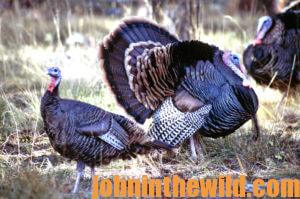 hen. By using several different types of calling, you can sound like multiple hens in different places. If a gobbler has to choose between mating one hen or three hens, the odds are in your favor, and he will come to you.
hen. By using several different types of calling, you can sound like multiple hens in different places. If a gobbler has to choose between mating one hen or three hens, the odds are in your favor, and he will come to you.
* Every time the turkeys headed toward me, I’d continue to soft call them. Sometimes, I would get a little bit louder than Johnny to give the impression that these three hens really wanted to be with those two gobblers.
* Soft calling often brings in gobblers when loud calling isn’t as effective. I started calling softer than Johnny, but loud enough for the gobblers to hear me and fly off the roof. As the birds came closer, I called even softer, even though Johnny called louder.
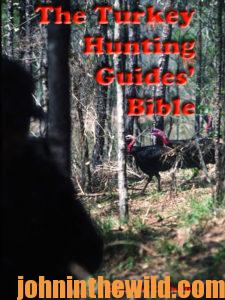 To learn more about turkey hunting, check out John E. Phillips’s book, “The Turkey Hunting Guides’ Bible,” at https://amzn.to/2ZlSXEP, and available in Kindle, print and Audible versions.
To learn more about turkey hunting, check out John E. Phillips’s book, “The Turkey Hunting Guides’ Bible,” at https://amzn.to/2ZlSXEP, and available in Kindle, print and Audible versions.
Tomorrow: Taking the Comanche Turkey

